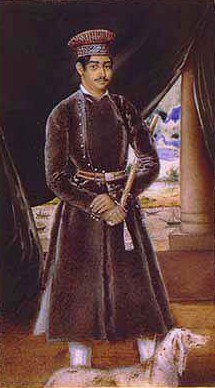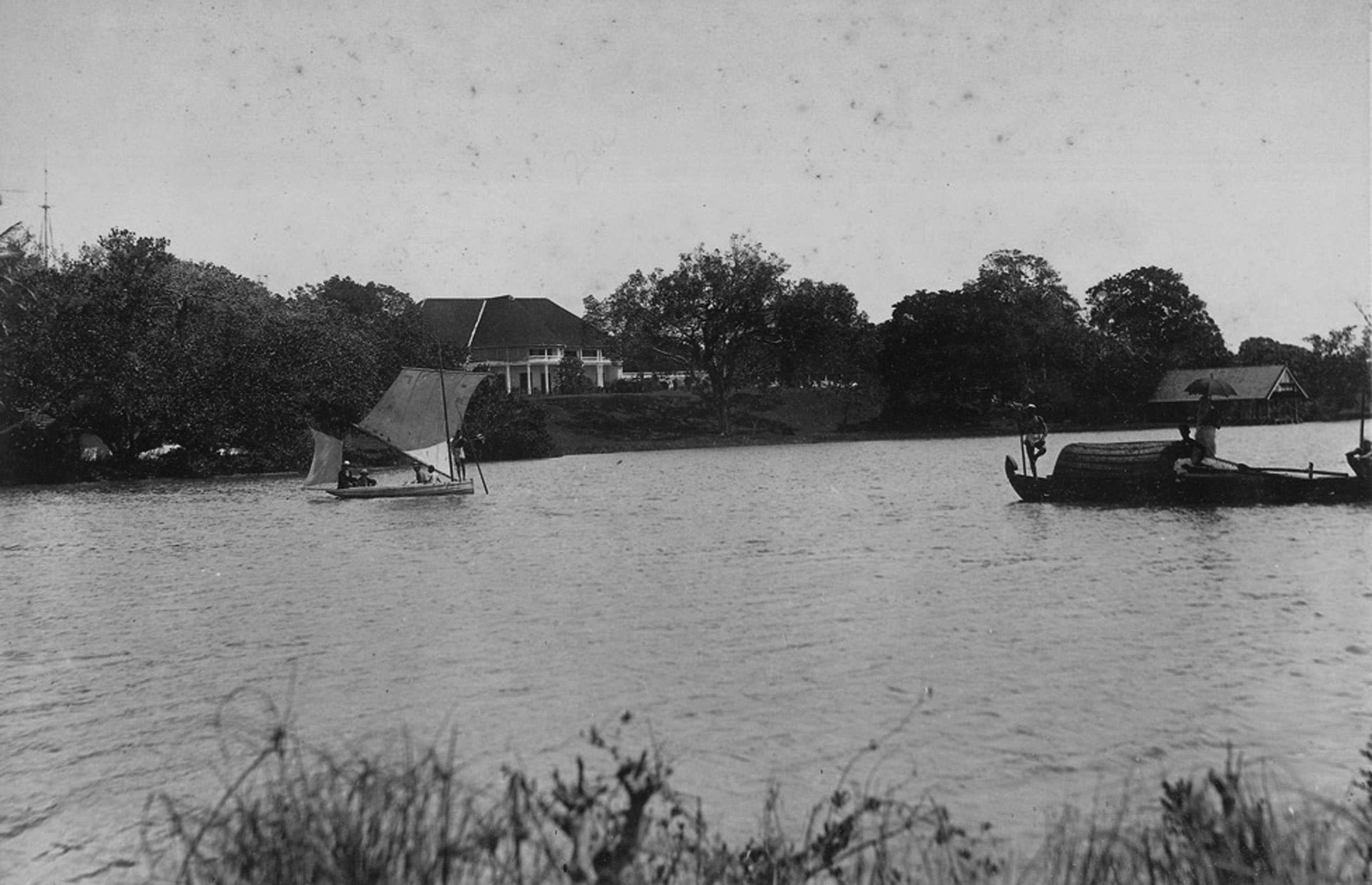|
Darbar (title)
Darbar or Durbar or Darbar Sahib (Gujarati: ISO 15919: ''Darbār'') is a title of honor or respect used mainly in the Indian states of Gujarat and Rajasthan. Chieftain or Lord of small petty princely states, which existed in the pre-independence era, who used title as together with honorific Saheb, to be referred as Darbar Saheb. Traditionally, it was used to refer to persons belonging to the landed-nobility, who may also be from the communities of Kathis, Mers, Charans or Rajputs. As such, many dominant caste or hereditary chieftain of an erstwhile princely states may be referred to as Darbar in the general use of the word. The title was mostly in use in areas now covered by Gujarat and Rajasthan However, there is no separate notified caste called Darbar. It was a title of honor more in use during princely India, which was used to refer to chieftains and is prevalent in use even today mainly in rural Gujarat. See also Related topics * Jagirdar * Thakur * Feudalis ... [...More Info...] [...Related Items...] OR: [Wikipedia] [Google] [Baidu] |
Gujarati Language
Gujarati (; gu, ગુજરાતી, Gujarātī, translit-std=ISO, label= Gujarati script, ) is an Indo-Aryan language native to the Indian state of Gujarat and spoken predominantly by the Gujarati people. Gujarati is descended from Old Gujarati (). In India, it is one of the 22 scheduled languages of the Union. It is also the official language in the state of Gujarat, as well as an official language in the union territory of Dadra and Nagar Haveli and Daman and Diu. As of 2011, Gujarati is the 6th most widely spoken language in India by number of native speakers, spoken by 55.5 million speakers which amounts to about 4.5% of the total Indian population. It is the 26th most widely spoken language in the world by number of native speakers as of 2007.Mikael Parkvall, "Världens 100 största språk 2007" (The World's 100 Largest Languages in 2007), in '' Nationalencyklopedin''. Asterisks mark th2010 estimatesfor the top dozen languages. Outside of Gujarat, Gujarati ... [...More Info...] [...Related Items...] OR: [Wikipedia] [Google] [Baidu] |
Rajasthan
Rajasthan (; lit. 'Land of Kings') is a state in northern India. It covers or 10.4 per cent of India's total geographical area. It is the largest Indian state by area and the seventh largest by population. It is on India's northwestern side, where it comprises most of the wide and inhospitable Thar Desert (also known as the Great Indian Desert) and shares a border with the Pakistani provinces of Punjab to the northwest and Sindh to the west, along the Sutlej- Indus River valley. It is bordered by five other Indian states: Punjab to the north; Haryana and Uttar Pradesh to the northeast; Madhya Pradesh to the southeast; and Gujarat to the southwest. Its geographical location is 23.3 to 30.12 North latitude and 69.30 to 78.17 East longitude, with the Tropic of Cancer passing through its southernmost tip. Its major features include the ruins of the Indus Valley civilisation at Kalibangan and Balathal, the Dilwara Temples, a Jain pilgrimage site at Rajasthan's only hil ... [...More Info...] [...Related Items...] OR: [Wikipedia] [Google] [Baidu] |
Honorifics
An honorific is a title that conveys esteem, courtesy, or respect for position or rank when used in addressing or referring to a person. Sometimes, the term "honorific" is used in a more specific sense to refer to an honorary academic title. It is also often conflated with systems of honorific speech in linguistics, which are grammatical or morphological ways of encoding the relative social status of speakers. Honorifics can be used as prefixes or suffixes depending on the appropriate occasion and presentation in accordance with style and customs. Typically, honorifics are used as a style in the grammatical third person, and as a form of address in the second person. Use in the first person, by the honored dignitary, is uncommon or considered very rude and egotistical. Some languages have anti-honorific (''despective'' or ''humilific'') first person forms (expressions such as "your most humble servant" or "this unworthy person") whose effect is to enhance the relative honor ... [...More Info...] [...Related Items...] OR: [Wikipedia] [Google] [Baidu] |
Cultural History Of India
Indian culture is the heritage of social norms, ethical values, traditional customs, belief systems, political systems, artifacts and technologies that originated in or are associated with the ethno-linguistically diverse India. The term also applies beyond India to countries and cultures whose histories are strongly connected to India by immigration, colonisation, or influence, particularly in South Asia and Southeast Asia. India's languages, religions, dance, music, architecture, food and customs differ from place to place within the country. Indian culture, often labelled as a combination of several cultures, has been influenced by a history that is several millennia old, beginning with the Indus Valley civilization and other early cultural areas.John Keay (2012), ''India: A History'', 2nd Ed – Revised and Updated, Grove Press / Harper Collins, , see Introduction and Chapters 3 through 11Mohammada, Malika (2007), ''The foundations of the composite culture in India'', Aak ... [...More Info...] [...Related Items...] OR: [Wikipedia] [Google] [Baidu] |
Heads Of State
A head of state (or chief of state) is the public persona who officially embodies a state Foakes, pp. 110–11 " he head of statebeing an embodiment of the State itself or representatitve of its international persona." in its unity and legitimacy. Depending on the country's form of government and separation of powers, the head of state may be a ceremonial figurehead or concurrently the head of government and more (such as the president of the United States, who is also commander-in-chief of the United States Armed Forces). In a parliamentary system, such as the United Kingdom or India, the head of state usually has mostly ceremonial powers, with a separate head of government. However, in some parliamentary systems, like South Africa, there is an executive president that is both head of state and head of government. Likewise, in some parliamentary systems the head of state is not the head of government, but still has significant powers, for example Morocco. In cont ... [...More Info...] [...Related Items...] OR: [Wikipedia] [Google] [Baidu] |
Titles In India
A title is one or more words used before or after a person's name, in certain contexts. It may signify either generation, an official position, or a professional or academic qualification. In some languages, titles may be inserted between the first and last name (for example, ''Graf'' in German, Cardinal in Catholic usage (Richard Cardinal Cushing) or clerical titles such as Archbishop). Some titles are hereditary. Types Titles include: * Honorific titles or styles of address, a phrase used to convey respect to the recipient of a communication, or to recognize an attribute such as: ** Imperial, royal and noble ranks ** Academic degree ** Social titles, prevalent among certain sections of society due to historic or other reasons. ** Other accomplishment, as with a title of honor * Title of authority, an identifier that specifies the office or position held by an official Titles in English-speaking areas Common titles * Mr. – Adult man (regardless of marital status) ... [...More Info...] [...Related Items...] OR: [Wikipedia] [Google] [Baidu] |
Feudalism In India
Indian feudalism refers to the feudal society that made up India's social structure until the Mughal Dynasty in the 16th century. The Guptas and the Kushans played a major role in the introduction and practice of feudalism in India, and are examples of the decline of an empire caused by feudalism. Terminology Use of the term feudalism to describe India applies a concept of medieval European origin, according to which the landed nobility held lands from the Crown in exchange for military service, and vassals were in turn tenants of the nobles, while the peasants (villeins or serfs) were obliged to live on their lord's land and give him homage, labor, and a share of the produce, notionally in exchange for military protection. Feudalism is most likely introduced to India when the Kushan Dynasty from Central Asia invaded India and introduced new policies of their own. The term Indian feudalism is used to describe taluqdar, zamindar, jagirdar, ghatwals, mulraiyats, sardar, mank ... [...More Info...] [...Related Items...] OR: [Wikipedia] [Google] [Baidu] |
Thakur (title)
Thakur is a historical feudal title of the Indian subcontinent. It is also used as a surname in the present day. The female variant of the title is Thakurani or Thakurain, and is also used to describe the wife of a Thakur. There are varying opinions among scholars about its origin. Some scholars suggest that it is not mentioned in the Sanskrit texts preceding 500 BCE, but speculates that it might have been a part of the vocabulary of the dialects spoken in northern India before the Gupta Empire. It is viewed to have been derived from word ''Thakkura'' which, according to several scholars, was not an original word of the Sanskrit language but a borrowed word in the Indian lexis from the Tukhara regions of Inner Asia. Another view-point is that ''Thakkura'' is a loan word from the Prakrit language. Scholars have suggested differing meanings for the word, i.e. "god", "lord", and "master of the estate". Academics have suggested that it was only a title, and in itself, did not g ... [...More Info...] [...Related Items...] OR: [Wikipedia] [Google] [Baidu] |
Princely States
A princely state (also called native state or Indian state) was a nominally sovereign entity of the British Indian Empire that was not directly governed by the British, but rather by an Indian ruler under a form of indirect rule, subject to a subsidiary alliance and the suzerainty or paramountcy of the British crown. There were officially 565 princely states when India and Pakistan became independent in 1947, but the great majority had contracted with the viceroy to provide public services and tax collection. Only 21 had actual state governments, and only four were large (Hyderabad State, Mysore State, Jammu and Kashmir State, and Baroda State). They acceded to one of the two new independent nations between 1947 and 1949. All the princes were eventually pensioned off. At the time of the British withdrawal, 565 princely states were officially recognised in the Indian subcontinent, apart from thousands of zamindari estates and jagirs. In 1947, princely states covered 40% ... [...More Info...] [...Related Items...] OR: [Wikipedia] [Google] [Baidu] |
Princely State
A princely state (also called native state or Indian state) was a nominally sovereign entity of the British Indian Empire that was not directly governed by the British, but rather by an Indian ruler under a form of indirect rule, subject to a subsidiary alliance and the suzerainty or paramountcy of the British crown. There were officially 565 princely states when India and Pakistan became independent in 1947, but the great majority had contracted with the viceroy to provide public services and tax collection. Only 21 had actual state governments, and only four were large ( Hyderabad State, Mysore State, Jammu and Kashmir State, and Baroda State). They acceded to one of the two new independent nations between 1947 and 1949. All the princes were eventually pensioned off. At the time of the British withdrawal, 565 princely states were officially recognised in the Indian subcontinent, apart from thousands of zamindari estates and jagirs. In 1947, princely states covered ... [...More Info...] [...Related Items...] OR: [Wikipedia] [Google] [Baidu] |







